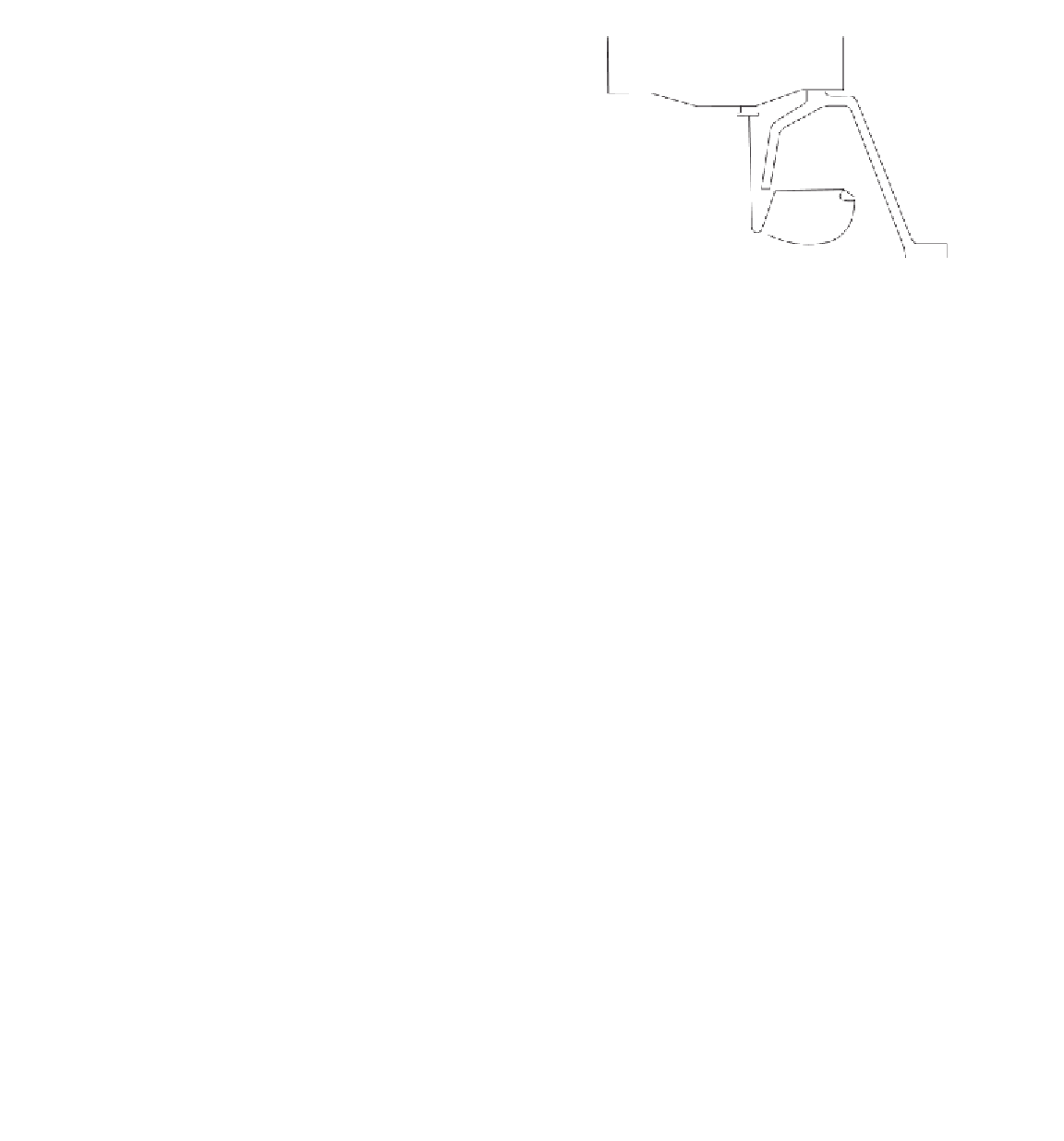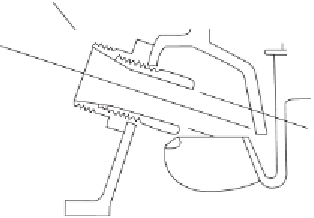Agriculture Reference
In-Depth Information
Figure 8.6
System that
combines a hydroelectric turbine
with a water-return piping system
to convert the mechanical energy
of moving water into electrical
energy.
From NoOutage.com,
http://www.nooutage.com/images/esd-
turgo-cutaway.gif.
Generator
t-1/2* Pipe Fitting
Housing
Nozzle
Turbine
Sidebar: Water Consumption
The Internet is a good source for calculating water demand. For exam-
ple, the Computer Support Group, Inc. (CSG) and the CSGNetwork.com
Web site has a “water consumption calculator,” http://www.csgnetwork.com/
waterusagecalc.html. This provides information on locations and types of water
use. The first step in conservation is an inventory of present use. From there,
adjustments to design can be made to arrive at a plan that reduces the demand
for water. The calculator provides an estimate of household consumption both
indoor and outdoors. After calculating water-use patterns, the designer can
build in ways to conserve based on the clientele's lifestyle.
The water is contained in a tall vertical pipe until a set static head pressure
is achieved. Automated control systems would be used to determine when suf-
ficient pressure is present and return the energy generated to the power grid
or to battery storage used for operating booster pumps. Using rainfall data and
roof-area calculations, Tom calculated the static head and from this the hydro-
electric potential power output. Since power increases logarithmically with static
head, the taller the building, the more power that is potentially produced (see
Fig. 8.7). The approach would require the addition of a central, vertical gray
water collector pipe along with some additional electrical and controls wiring to
operate the system, and roof structure designed to collect rainwater for use in
the system. Vallero contacted the manufacturer of the turbine to discuss possible
design challenges. The manufacturer's representative mentioned that gray water
can be much more corrosive than unpolluted water, so the turbine parts may
need to be modified to include more chemically resistant materials. The resulting
power generated is again modest, but the innovation provides a springboard for
further exploration of the use of gravity and potential energy created by static
pressure head in building systems to generate power locally.






Search WWH ::

Custom Search